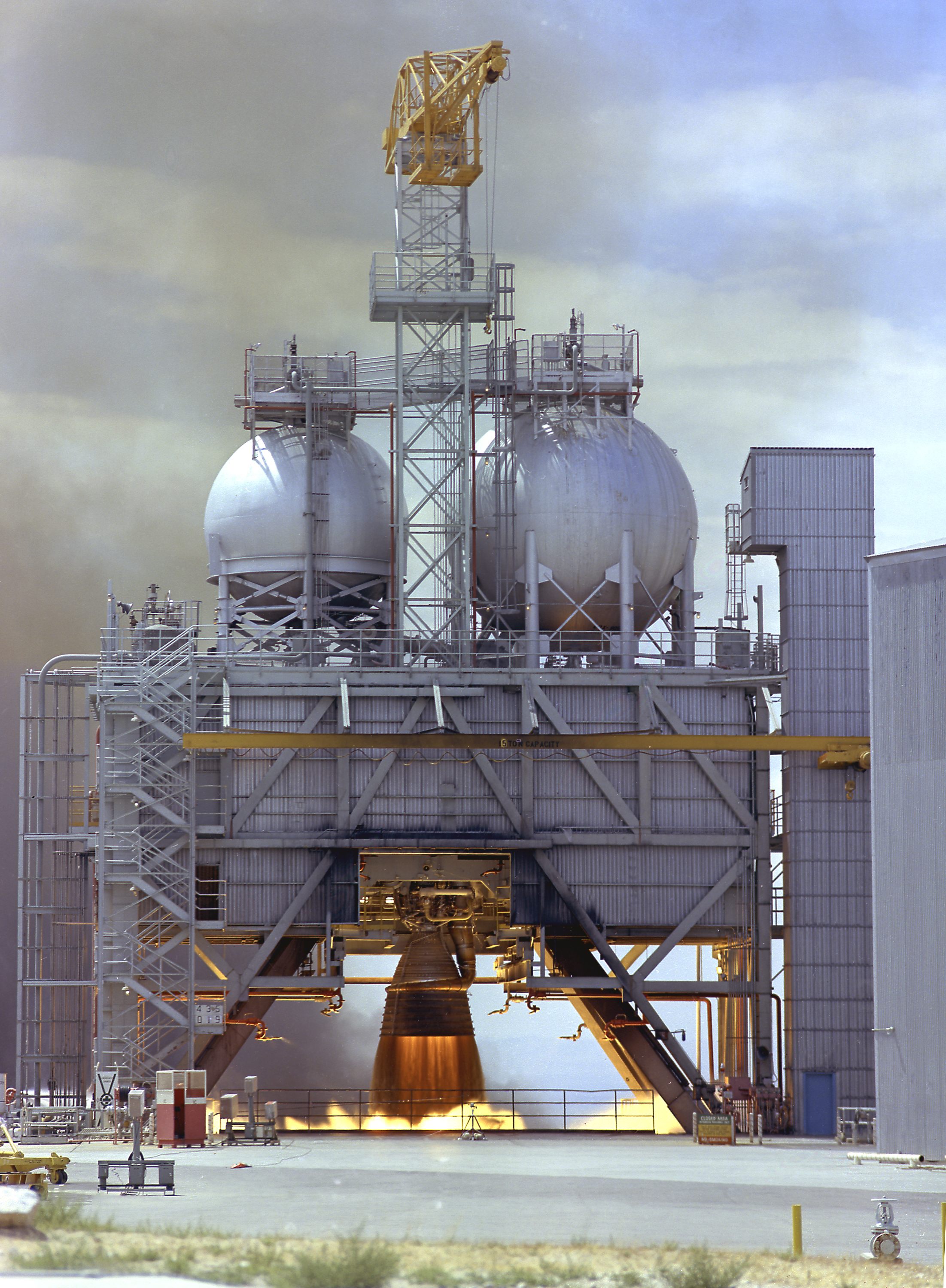
First Law of Rocketry - While the engine is running at no time can the pressure in the expansion chamber ever exceed the out pressure of the main fuel pump.
Posted on 01/24/2013 5:34:29 PM PST by Islander7
A vintage rocket engine built to blast the first U.S. lunar mission into Earth's orbit more than 40 years ago is again rumbling across the Southern landscape.
The engine, known to NASA engineers as No. F-6049, was supposed to help propel Apollo 11 into orbit in 1969, when NASA sent Neil Armstrong and two other astronauts to the moon for the first time.
(Excerpt) Read more at foxnews.com ...

First Law of Rocketry - While the engine is running at no time can the pressure in the expansion chamber ever exceed the out pressure of the main fuel pump.
They have one more money pit to shut down, the ISS.
Check this out. Those five F-1s produced 160,000,000 horsepower!
http://www.apollosaturn.com/facts_figs.htm

Amen to that. I was raised in New Orleans, so the Rocketdyne engines tested at the Stennis, Mississippi facility used to rattle my mother's china cabinet. I think they tested an F1 there a few times, but never all five together. Mostly they worked on the second stage engines (and later, the shuttle engines).
God bless the boys with the pocket protectors and slide rules, every last one of 'em.

ROFL!
Motor? Who wrote this?
I believe rocket engines are often referred to as motors.
Otherwise a Bad Thing will happen.
When the rocket goes up
we will win great renown,
"It's an excellent booster,"
said Wernher Von Braun !
Electrically, rail guns and coil guns. The problem here is the rate of acceleration would turn most organisms into pancakes unless employing a VERy long rail/tube. These methods, esp. rail guns, require massive amounts of current, on the order of mega-amperes.
A hybrid of conventional jet turbine engine technology, scram jet, and rocket could get one to space starting from an airport.
Lighter-than-air solutions (balloons/dirigibles) could conceivably play a role. Imagine a lighter-than-air airport at 50,000 feet ASL.
More futuristic modes like macro wave galaxies and teleportation are beyond our 21st century horizons but may someday be feasible.
Yes, there are indeed MANY options besides the "obvious" booster rocket approach; commercialization of space exploration brings the creativity of the free market to bear (in sharp contradistinction to the President's position that "it takes government" to accomplish such feats).
Kudos for your creativity and alacrity to think outside the box.
Motors: solid fuel
Engines: liquid fuel
On the other hand the two terms are used interchangeably, and in common parlance mean the same thing.
What's stopping you from doing that?
That’s why you lauch a rocket from as close to the equator as possible. The Soviets had to build heavier lift rockets than the US, since we could launch from much closer to the equator.
God I miss what this country once was...
I was born and raised in New Orleans. We had a beautiful house on Pearl River on the Mississippi side in Gainesville. We were kind of upset when the government took the land because the house was in the ‘buffer zone’. Of course, the paid us for the land and house then sold the house back to us for $1 but we had to move the house to another lot away from water in Bay St. Louis.
My dad used to talk about seeing concrete mixer trucks lined up for a half-mile or more, waiting to enter the Stennis Space Center when the test stands were under construction. NASA poured so much concrete in there that the locals started to think there were nuclear missile silos up in that swamp.

If we put some wheels on the unused Saturn V rocket and the Apollo 11 engine and took it to the salt tracks. How fast do you reckon we could go?
Glad I got to meet about a half dozen men who walked on the moon and quite a few who flew shuttle missions (and others like Skylab). It’ll be awhile before I get to meet much “new blood” in that arena.
Disclaimer: Opinions posted on Free Republic are those of the individual posters and do not necessarily represent the opinion of Free Republic or its management. All materials posted herein are protected by copyright law and the exemption for fair use of copyrighted works.